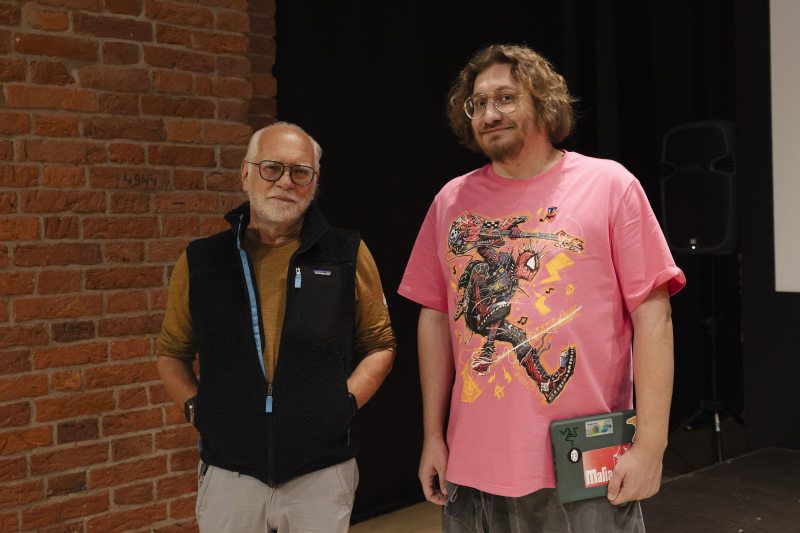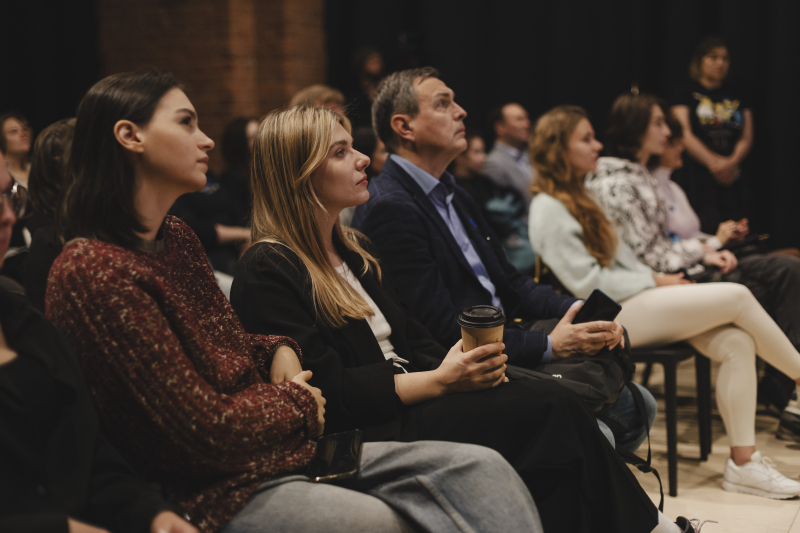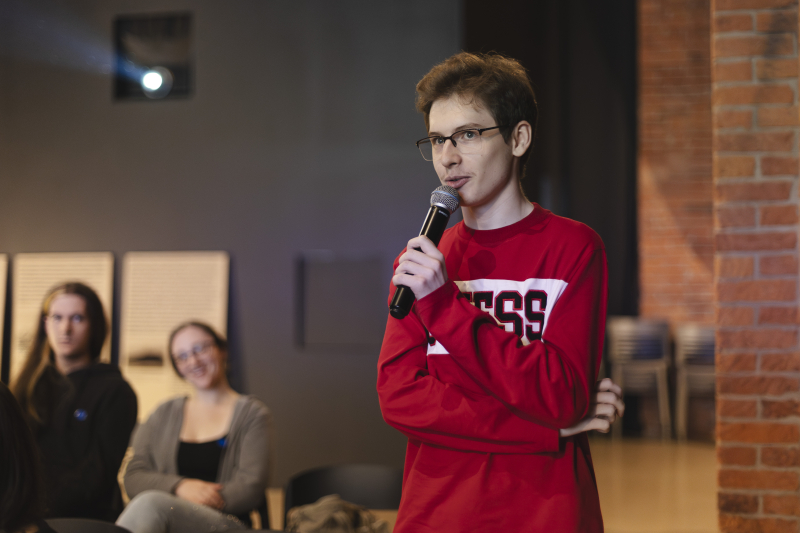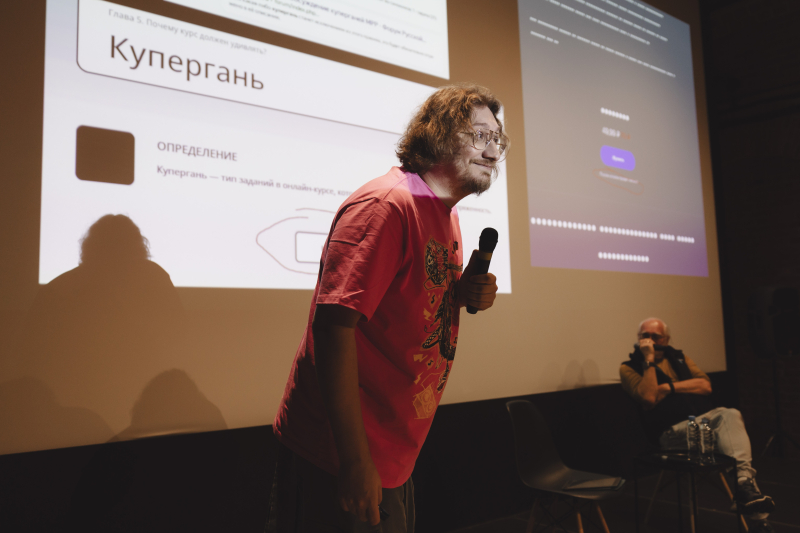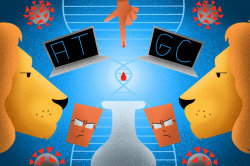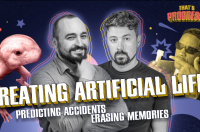Why to joke
-
Talk about complex things. Humor can help you get your message across and make it more engaging. It can also attract a wider audience to science, be it current and prospective students or graduates. Academics can also use humor to make science more accessible;
-
Spend resources irrationally. As humans, we subconsciously seek to do something “unnecessary” along with urgent, useful tasks as a way to unload ourselves and feel the freedom of our will. Taking time to make seemingly useless jokes meets this need;
-
Add a human touch to scientific content. In order to trust the information we receive, we need to know that the source behind the information is a human, and humor serves as an indicator of this humanness. Even if unconsciously, we look for it in any content. And even though AI can now tell jokes, too, our brain still perceives humor as something that only humans are capable of;
-
Blow off steam. This is something that is especially important during intense work. During these moments, humor helps us take a breather, focus on the task, and complete it more efficiently;
-
Convey “non-essential” knowledge that will most likely not be useful in practice. Students typically see no point in learning this kind of information, but it can be beneficial, and a joke can help draw their attention to it.
The reason why jokes work like this lies in our brain. When we tell a joke, our brain releases dopamine that makes us feel good and anticipate something positive.
How to joke
The golden rule of any joke for a wider audience is that it should cause a smile, not laughter. A witty joke that makes you laugh may offend the audience, even if that wasn't the intention.
Jokes acceptable in science and education:
-
Classic jokes or short sketches, puns. As an example, Andrey Sebrant used jokes that physics majors told in their theater sketches, often anticipating real events and discoveries;
-
Visual references. Visual content in an educational course or a pop-sci lecture can be styled as a cartoon, comics, or any other pop culture content. Another option is to add pictures of well-recognized characters from movies, video games, or books that would help students remember information better through associations. For instance, the authors of the course Ecological Parasitology by Lectorium accompanied the speaker’s presentation about the Red Queen hypothesis from evolutionary biology with photographs of the eponymous character from Tim Burton's Alice in Wonderland;
-
Pop culture references. This could be any form of quotation. For example, in each video of the course Marine Fouling by Lectorium, the lecturer grows a large amount of “marine makeup” – shells, bacteria, and algae – on their skin, just as the crew of the Flying Dutchman in the Pirates of the Caribbean series;
-
Neologisms. These words can make listeners not only smile but also rush into the net looking for their meaning. Thus, Yakov Somov created a longread about the challenges of online education at higher education institutions. The headline featured a made-up expression that can be deciphered only by engaged and motivated minds. As explained by Yakov Somov, the experiment can not only gauge the audience’s interest, but also get a wider audience for a local meme of the educational community.
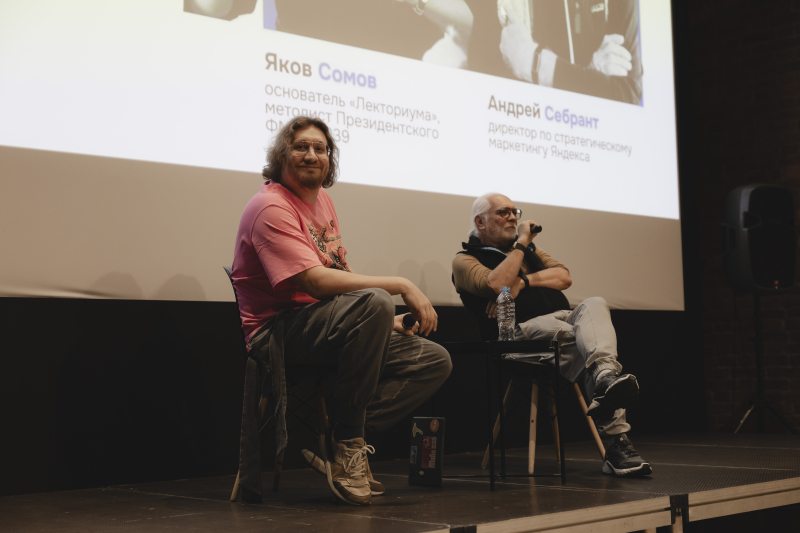
Andrey Sebrant and Yakov Somov. Photo by the event’s organizers
Physicists vs. lyricists
A joke will only work if people understand its context. That’s why the particular humor of any group, be it physicists or any other profession, can be called distinctive. Physicists’ jokes may seem special and incomprehensible only to those who do not have the same expertise. The view that geologists do not joke at all, and that mathematicians' jokes are sharper than philologists' ones are just myths. Humor “mechanisms” are the same for everyone.
Noble Talks are organized by ITMO’s Center for Science Communication as part of the project Scientific St. Petersburg, supported by the Ministry of Science and Higher Education.
